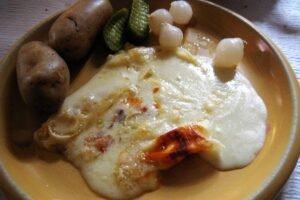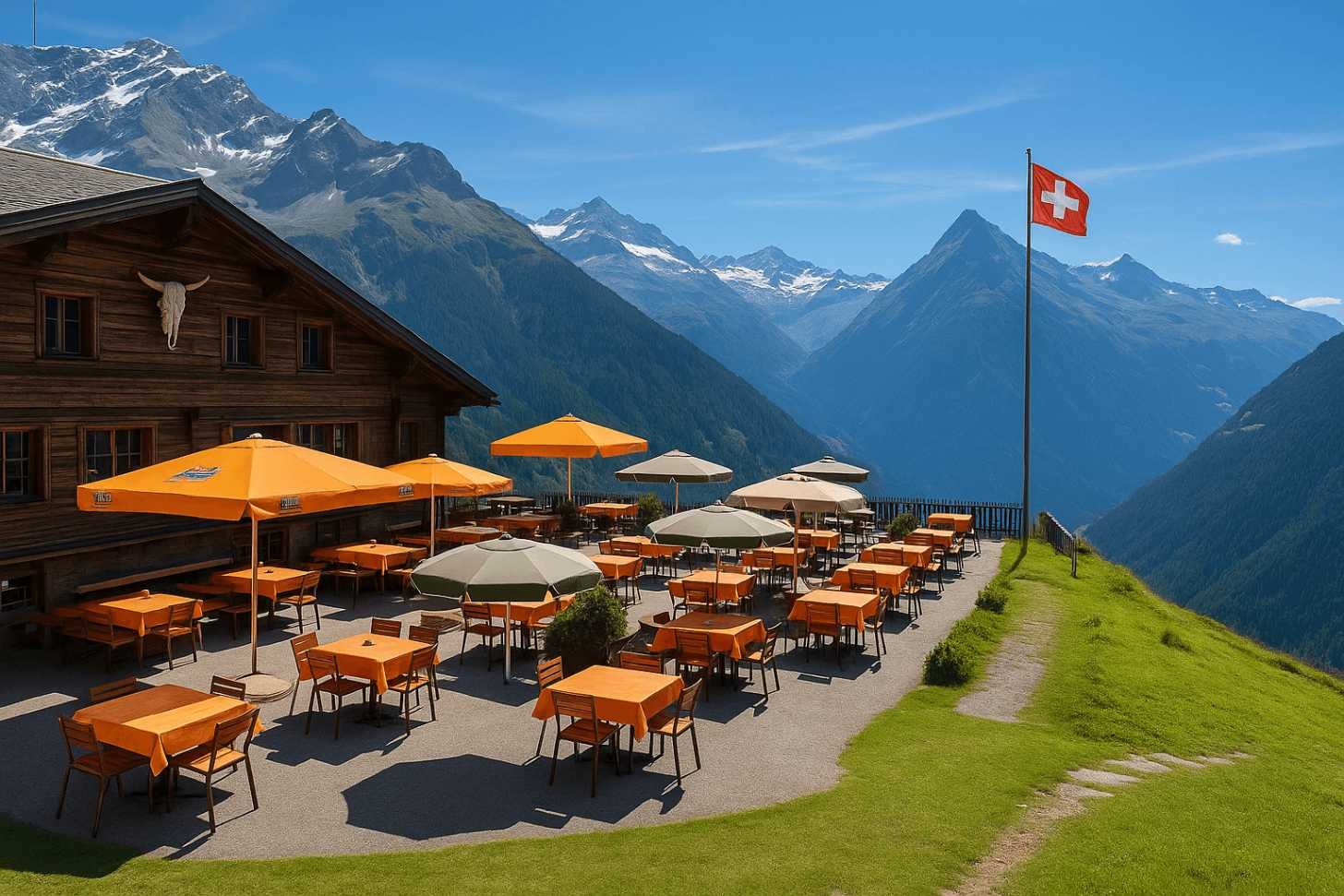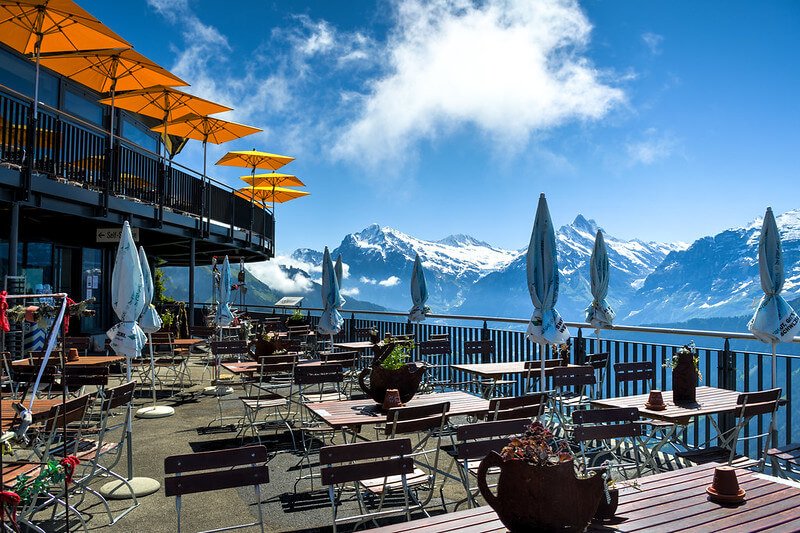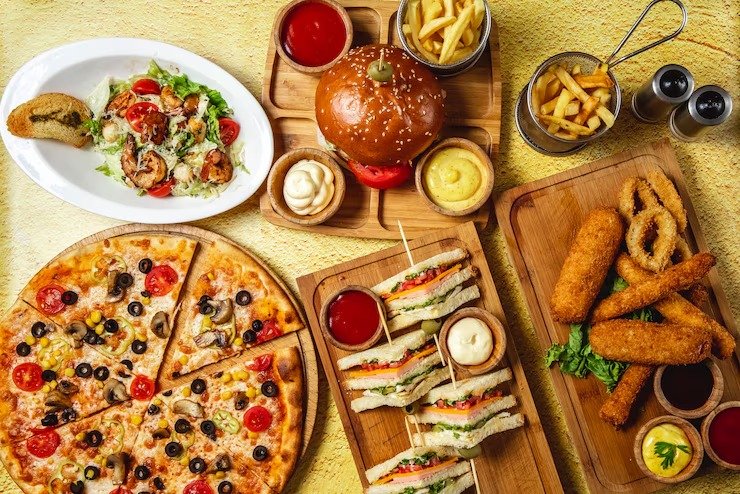Switzerland, renowned for its breathtaking elevated view, is similarly celebrated for its culinary delights. Swiss nourishment reflects the country’s multicultural legacy, affected by its German, French, and Italian-speaking locales. Past its world-famous cheeses and chocolates, Swiss food gloats a wide extend of generous and flavorful dishes made from new, neighborhood fixings. These foods aren’t fair suppers; they’re a confirmation to the Swiss way of life, encapsulating convention, quality, and innovation.
In this comprehensive guide, we will investigate the best foods in Switzerland, from notorious dishes to covered up culinary pearls. Along the way, I’ll share individual insights and tips to offer assistance you involvement Swiss cooking like a nearby. By the conclusion, you’ll have a guide to reveling in one of Europe’s most scrumptious culinary traditions.
An Overview of Swiss Cuisine
Swiss cuisine is as differing as the country’s etymological districts, and each canton boasts its claim specialties. Here’s a breakdown of what makes Swiss food stand out:
- Simplicity: Swiss dishes prioritize high-quality, new fixings over expound preparations.
- Cultural Fusion: The cooking borrows intensely from French, Italian, and German culinary conventions, making a wealthy embroidered artwork of flavors.
- Local Ingredients: Swiss food frequently highlights locally sourced cheese, potatoes, bread, and new create.
Swiss Cuisine: A Blend of Cultures
Switzerland’s geological differences is reflected in its food. The food shifts broadly depending on the locale, impacted by the neighboring nations of Germany, France, and Italy. Each region contributes its fixings, flavors, and cooking strategies, making a wealthy embroidered artwork of culinary offerings.
Key Characteristics of Swiss Cuisine
- Cheese and Dairy: Switzerland’s plenteous pastures have made it a center for cheese-making. Swiss cheeses like Gruyère, Emmental, and Appenzeller are all inclusive revered.
- Chocolate Mastery: Swiss chocolate is a foundation of the country’s culinary notoriety. Brands like Lindt, Toblerone, and artisanal chocolatiers have re-imagined the craft.
- Comfort Food: Swiss dishes are healthy and filling, culminate for the cold elevated climate.
- Fresh Ingredients: From elevated herbs to mountain-raised meats, Swiss chefs prioritize quality and seasonality.
1. Cheese Fondue: A Swiss Classic
No visit to Switzerland is total without reveling in cheese fondue, one of the country’s most famous dishes. Fondue started from the French-speaking districts and was customarily a way for country communities to utilize ancient bread and solidified cheese during winter.
What Is It?
Fondue is Switzerland’s most celebrated dish. It comprises of liquefied cheese served in a communal pot and eaten by plunging bread 3d shapes into it utilizing long forks.
Regional Influence:
Fondue is most well known in the French-speaking districts of Switzerland, such as Geneva and Vaud.
What Makes It Special?
Cheese fondue is more than fair a meal—it’s a communal encounter. At the center of the table is a pot of liquefied cheese enhanced with white wine and flavored with garlic and kirsch (cherry brandy). Coffee shops plunge pieces of dried up bread into the cheese utilizing long forks.
How to Enjoy It Properly
- Always mix the cheese in a figure-eight movement to keep it smooth.
- If you drop your bread into the pot, be arranged to confront a perky “penalty,” such as singing a song!
During my visit to Gruyères, the origin of Gruyère cheese, I experienced an bona fide fondue combined with a glass of fresh Fendant wine. It was a comforting and communal feasting encounter culminate for chilly elevated nighttimes.
2. Raclette: Melted Perfection
What Is It?
Raclette is both a dish and a sort of cheese. It includes softening the cheese and scratching it over bubbled potatoes, pickles, and cured meats.
Regional Influence:
This dish hails from the Valais locale and has gotten to be a Swiss culinary staple.
How to Enjoy It:
- The cheese is ordinarily dissolved on a raclette flame broil or by an open flame.
- Pair with white wine or tea to improve the flavors and help digestion.
Raclette is another cheese-centric dish that epitomizes the Swiss adore for straightforwardness and flavor. It’s both a dish and a sort of cheese, starting from the Valais region.
How It’s Made
A wheel of Raclette cheese is warmed, and the liquefied layer is scratched onto plates of bubbled potatoes, cured vegetables, and cured meats.
Cultural Significance
Traditionally served at winter social occasions, Raclette is a cozy and intelligently feast that brings individuals together. Cutting edge raclette barbecues make it less demanding to appreciate this dish at domestic, but the bona fide strategy of softening the cheese over an open fire remains unbeatable.
Pro Tip: Pair Raclette with Fendant, a white wine from the Valais locale, for a really bona fide experience.
Sharing a raclette supper in Zermatt whereas looking at the Matterhorn remains one of my favorite nourishment recollections. The effortlessness and abundance of the dish made it unforgettable.
3. Rösti: Switzerland’s Comfort Food
Rösti is Switzerland’s reply to hash browns but with a unique turn. This firm potato hotcake started as a breakfast dish for agriculturists in the Bernese Oberland, but it’s presently a national favorite.
What Is It?
Rösti is a golden, crispy potato hotcake frequently served as a side dish or indeed a fundamental course.
Regional Influence:
This dish is quintessentially Swiss-German and is considered a national treasure.
How to Enjoy It:
- Made from ground potatoes, rösti can be cooked plain or with increases like onions, bacon, or cheese.
- Often served nearby fricasseed eggs, wiener, or verdant greens.
How It’s Made
Grated potatoes are pan-fried until brilliant and firm. Whereas customarily made with fair potatoes, a few varieties incorporate onions, bacon, or cheese.
Best Pairings:
Rösti is often served nearby Zürcher Geschnetzeltes (veal in rich sauce) or with browned eggs for breakfast.
The idealize Rösti has a fresh outside and a delicate center. I learned this whereas observing a chef at a little eatery in Lauterbrunnen, who liberally shared tips on accomplishing the perfect surface.
4. Swiss Chocolate: A Sweet Legacy
What Is It?
Swiss chocolate is world-renowned for its smooth, rich surface and extraordinary quality. Brands like Lindt, Toblerone, and Läderach have gotten to be worldwide icons.
Why It’s Special
Switzerland was one of the first nations to include drain to chocolate, a procedure spearheaded by Daniel Dwindle in the 19th century. Nowadays, Swiss chocolate is eminent for its smooth surface and adjusted sweetness.
Regional Influence:
While chocolate cherished across the country, Zurich and Geneva are center points for artisanal chocolatiers.
How to Enjoy It:
- Visit neighborhood chocolatiers to taste high quality truffles, pralines, and bars.
- Participate in a chocolate-making workshop to learn the make firsthand.
During a chocolate-tasting visit in Geneva, I found a recently discovered appreciation for dull chocolate imbued with Swiss elevated herbs.
Swiss chocolate needs no presentation. The country’s chocolatiers have idealized the craftsmanship, making smooth, wealthy treats that are venerated worldwide.
Must-Try Brands:
- Lindt: Known for its creamy truffles.
- Toblerone: Celebrated for its triangular shape and nougat pieces.
- Artisanal Shops: Chocolatiers like Sprüngli and Läderach offer special manifestations you won’t discover elsewhere.
Pro Tip: Don’t fair purchase Swiss chocolate involvement it. Numerous chocolate industrial facilities, like the Maison Cailler, offer visits and tastings.
5. Zürcher Geschnetzeltes
This smooth veal dish is a staple of Zurich’s culinary scene. Made with daintily cut veal, white wine, cream, and mushrooms, Zürcher Geschnetzeltes is both wealthy and comforting.
What Is It?
This classic Zurich dish comprises of cut veal cooked in velvety white wine and mushroom sauce, frequently served with rösti.
Regional Influence:
As the title proposes, it’s a forte of Zurich and is a must-try when going to the city.
How to Enjoy It:
- Best delighted in hot and naturally made in a conventional Swiss restaurant.
- Pair it with a glass of white wine for a really bona fide experience.
How to Serve It
It’s customarily combined with Rösti, making a concordant mix of flavors and textures.
Cultural Note: Whereas veal is the classic choice, numerous cutting edge forms utilize chicken or pork as a more reasonable alternative.
Dining in a cozy Zurich bar, I found the combination of delicate veal, wealthy sauce, and fresh rösti overwhelming a idealize representation of Swiss consolation food.
6. Birchermüesli: A Swiss Breakfast Staple
What Is It?
Invented by Swiss doctor Maximilian Bircher-Brenner, Birchermüesli is a solid breakfast dish made with oats, yogurt, ground apples, and nuts.
Regional Influence:
This dish is a staple over Switzerland and is commonly found in inns and homes.
How to Enjoy It:
- Enjoy it new for breakfast or as a light snack.
- Add regular natural products for additional flavor and nutrition.
Concocted by Swiss specialist Maximilian Bircher-Brenner, Birchermüesli is a nutritious and delicious way to start the day. This dish combines rolled oats, ground apples, nuts, and yogurt, sweetened with nectar or condensed drain.
Why It’s Famous
Birchermüesli made as a solid feast for patients but rapidly got to be a national favorite for its straightforwardness and flavor.
Personal Tip: During my remain at a mountain chalet, I cherished beginning my mornings with Birchermüesli made from new elevated yogurt and berries picked from the adjacent forest.
7. Nusstorte (Nut Tart)
What Is It?
A buttery shortcrust cake filled with caramelized walnuts, this dessert begins from the Engadin Valley.
Regional Influence:
A strength of the Graubünden locale, especially around St. Moritz.
How to Enjoy It:
- Best delighted in as a dessert or with coffee.
- Purchase a tart from a nearby pastry shop to encounter bona fide flavors.
Personal Tip: I brought domestic a Nusstorte as a trinket from a pastry kitchen in Davos—it made for a idealize blessing and a delightful update of Switzerland.
8. Polenta and Braised Meat
What Is It?
A generous dish made of slow-cooked polenta served with delicate, braised meats like meat or lamb.
Regional Influence:
This dish is a staple in the Ticino locale, reflecting its Italian culinary heritage.
How to Enjoy It:
- Traditionally cooked over an open fire for a wealthy, smoky flavor.
- Pair with ruddy wine for a cozy snow capped meal.
Personal Tip: In Bellinzona, I delighted in this dish in a natural cave (conventional Ticino eatery), where the flavors of the wide open really shone.
9. Swiss Wine
What Is It?
Though less internationally known, Swiss wines especially whites from the Valais and Vaud locales are exceptional.
Regional Influence:
The Valais locale produces a few of the country’s best wines, counting Fendant and Petite Arvine.
How to Appreciate It:
Visit nearby wineries for tastings.
Pair with Swiss cheese for the extreme culinary experience.
Personal Tip: Visiting the Lavaux Vineyards neglecting Lake Geneva was an exceptional involvement, made indeed way better by testing their fresh Chasselas wines.
10. Saffron Risotto
What It Is: A wealthy, saffron-flavored rice dish from the Ticino region.
Regional Influence:
This dish well known in the Italian-speaking Ticino region.
- Key Fixings: Arborio rice, saffron, butter, onions, and Parmesan cheese.
- Why It’s Popular: Saffron risotto is a affirmation to the Italian affect in Swiss cooking, particularly in the southern Ticino locale.
- How to Enjoy It:
Pair it with flame broiled vegetables or angle for a adjusted meal.
Garnish with new herbs for a pop of color and flavor.
Savoring saffron risotto in Lugano, went with by a glass of nearby Merlot, was a culinary highlight of my trip to southern Switzerland.
Regional Specialties Worth Exploring
Each Swiss canton brags its interesting culinary treasures. Here are a few territorial specialties you shouldn’t miss:
- Capuns (Graubünden): Swiss chard takes off stuffed with spätzli mixture and meat.
- Pizzoccheri (Ticino): A pasta dish made with buckwheat noodles, potatoes, and cheese.
- Polenta e Brasato (Italian Switzerland): Velvety polenta served with braised beef.
Experiencing Swiss Food: Insider Tips
1. Visit Local Markets
Switzerland’s week after week markets are neighborhood create, cheeses, and heated products treasure troves.
Best Markets:
- Carouge Market, Geneva: A bustling center for territorial delicacies.
- Oerlikon Market, Zurich: Idealize for new, regular ingredients.
2. Attend Food Festivals
Swiss food celebrations offer a more profound jump into the country’s culinary culture.
- Cheese Festival in Gruyères: Grandstands artisanal cheeses from over the country.
- Wine Celebration in Montreux: A celebration of Swiss winemaking traditions.
What Makes Swiss Nourishment Unique?
Swiss food is more than fair sustenance—it’s a celebration of the country’s different legacy and normal bounty. Here are a few perspectives that set it apart:
- Seasonal Ingredients: Swiss chefs pride themselves on utilizing new, nearby produce.
- Communal Dining: Numerous dishes, like fondue and Raclette, empower sharing and socializing.
- Quality Over Amount: Swiss cooking centers on flavor and craftsmanship or maybe than parcel size.
Personal Encounters with Swiss Cuisine
During my voyages over Switzerland, I had the opportunity to encounter the differences of its food. From enjoying a hot pot of fondue in a cozy chalet to tasting new Nusstorte in a little Graubünden pastry kitchen, each supper felt like a social travel. One of my most paramount encounters was a vineyard visit in Lavaux, where I inspected neighborhood wines combined with new bread and cheeses whereas ignoring the peaceful Lake Geneva.
FAQs About Swiss Food
1. Is Swiss food expensive?
Yes, feasting in Switzerland can be expensive. In any case, selecting for nearby markets, nourishment slows down, or self-catering lodging can offer assistance you appreciate bona fide flavors without breaking the bank.
2. Are there vegetarian-friendly Swiss dishes?
Absolutely! Dishes like rösti, Birchermüesli, and vegetable-based fondues cater to vegetarians.
3. Can I discover worldwide nourishment in Switzerland?
Yes, major cities like Zurich, Geneva, and Basel offer a wide assortment of worldwide cuisines.
Final Contemplations on Swiss Cuisine
Switzerland’s culinary offerings are as different and captivating as its scenes. From the wealthy, melty goodness of cheese fondue to the wanton sweetness of Swiss chocolate, each dish tells a story of convention, development, and social pride.
Whether you’re going to Switzerland for the to begin with time or the tenth, make beyond any doubt to test these notorious foods. Not as it were will you fulfill your taste buds, but you’ll moreover pick up a more profound appreciation for this extraordinary nation and its people.
So, pack your craving and get prepared to set out on a scrumptious travel through Switzerland!
Which Swiss nourishment are you most energized to attempt? Share your contemplations or individual encounters in the comments underneath! And if you’re arranging your trip, check out our curated nourishment visits for an extraordinary culinary experience.




















[…] the Bernese Harvest Festival, where you can immerse yourself in the local culture and indulge in a combination of food, music, and folk […]
[…] who are knowledgeable about both the art and the food. Dining here is a full sensory experience—a mix of great food, a fascinating environment, and a glimpse into Switzerland’s cultural […]
[…] my culinary adventures, I noticed a spectrum of Chinese food offerings in […]
[…] Food and Markets: Try local delicacies at food markets or small kiosks. For example, grab a bratwurst or a raclette sandwich at Zurich’s weekly […]
[…] Swiss food is Bern’s culinary soul, the city also boasts a collection of international foods to choose from. From Italian to Asian-fusion foods, Bern’s diverse restaurants give globetrotters […]
[…] Next? Your Swiss Food Adventure Starts […]
[…] Foods: Regular natural products and […]
[…] skiing, extravagance observes, and debauched Swiss chocolate. In any case, when one considers of Swiss food, the quick nourishment industry isn’t the to begin with thing that comes to […]